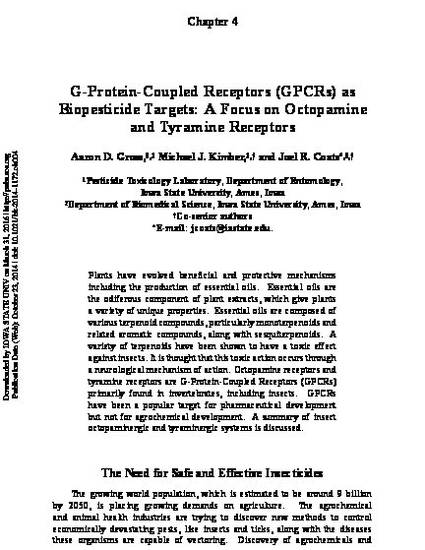
Plants have evolved beneficial and protective mechanisms including the production of essential oils. Essential oils are the odiferous component of plant extracts, which give plants a variety of unique properties. Essential oils are composed of various terpenoid compounds, particularly monoterpenoids and related aromatic compounds, along with sesquiterpenoids. A variety of terpenoids have been shown to have a toxic effect against insects. It is thought that this toxic action occurs through a neurological mechanism of action. Octopamine receptors and tyramine receptors are G-Protein-Coupled Receptors (GPCRs) primarily found in invertebrates, including insects. GPCRs have been a popular target for pharmaceutical development but not for agrochemical development. A summary of insect octopaminergic and tyraminergic systems is discussed.
Available at: http://works.bepress.com/joel_coats/106/

Reprinted with permission from Biopesticides: State of the Art and Future Opportunities, ACS Symposium Series, Vol. 1172. Copyright 2014 American Chemical Society.